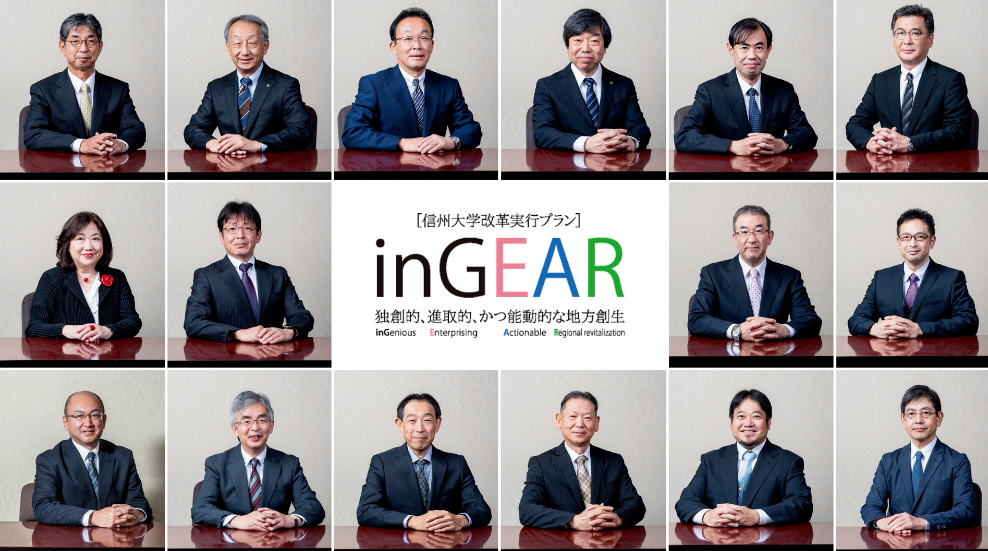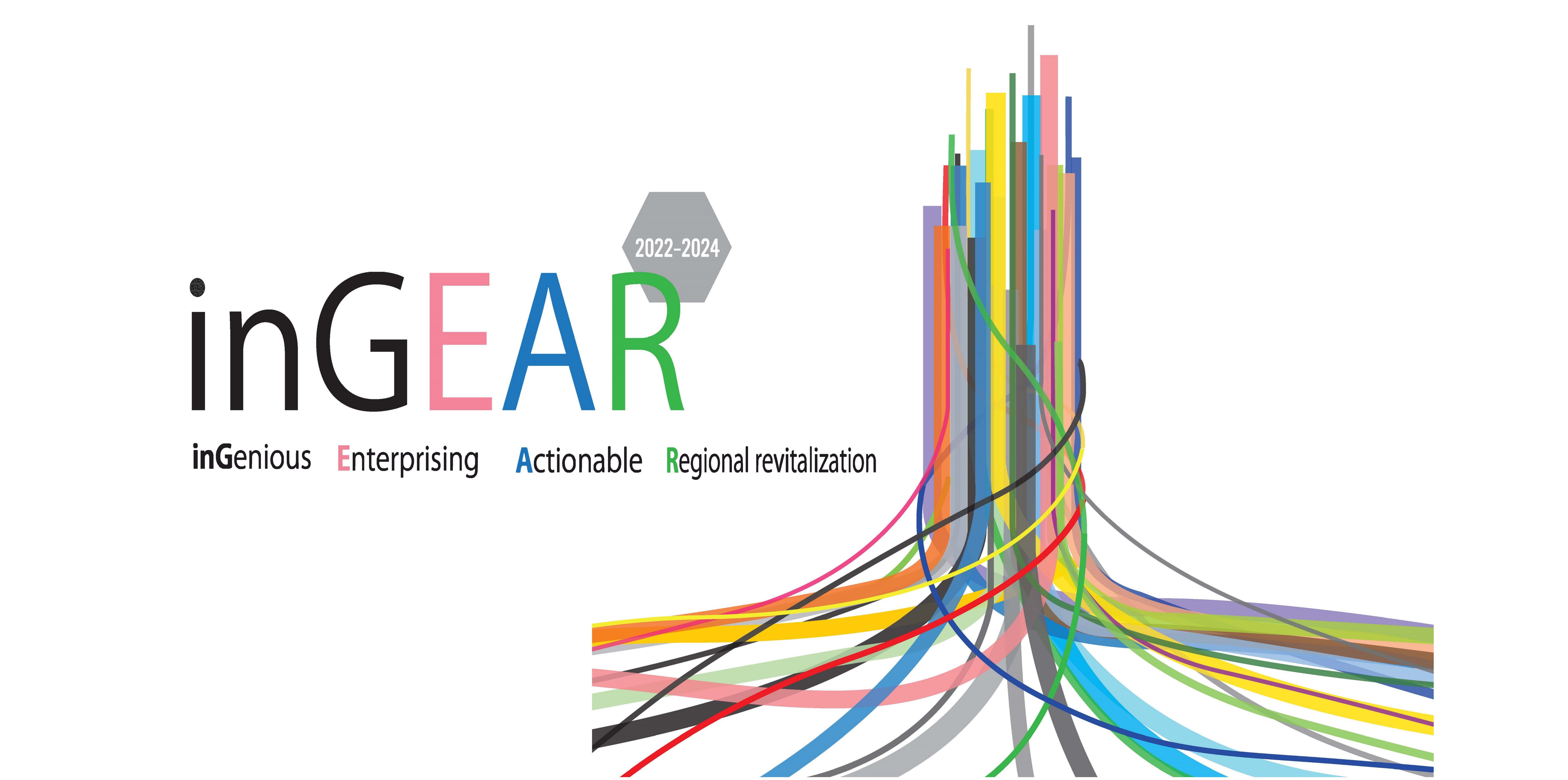Basic Policy
- HOME
- About
- Philosophy, Vision and Policy
- Basic Policy

Shinshu University Reform Action Plan inGEAR
We are proud to be able to present here Shinshu University's "inGEAR 2022-2024" Reform Action Plan. This plan, the NAKAMURA Plan, is a sequel to "the FIRST" PLAN (the YAMAZAWA Plan) and "the N・E・X・T" PLAN (the HAMADA Plan), and can be viewed as a portfolio comprising the goals and the METHODs to achieve them adopted by the Executive Directors and Vice-Presidents reporting to the current Executive Committee (until September 30, 2024). Over the next two and a half years, as we work steadily to implement the 4th Mid-term Goals and the Mid-term Plan, we will move forward with our reforms, stepping up a gear to transform Shinshu University into a university worthy of the title of "Engaged University".
In 2019, the Ministry of Education, Culture, Sports, Science and Technology (MEXT) published its National University Reform Policy, which calls for National Universities to (1) become centers for the development of advanced and high-quality human resources, (2) act as HUBs for the kind of innovation that leads to the sharing of new knowledge with the global community and produces an impact on society, (3) play a central role in the movement, both globally and within their own communities, of individuals with high levels of expertise, (4) support, and be supported by, the communities and regions in which they are located, (5) institute robust systems of governance, (6) develop networks that enable collaboration with a broad range of stakeholders, and (7) adopt measures to ensure that they remain of an appropriate size. The realization of these goals, I believe, will depend on how successfully the University can create a management culture in which faculty members and staff "work together". Indeed, I would like to take this concept one step further by proposing that the University's administration and management be based on cooperation not only between the faculty members and staff but also with the students, who will always be the primary stakeholders. If such a management philosophy is to become a reality, we will need to devote time to dialogue as we work towards our Organizational Development goals. We are convinced that it is only through such cooperative endeavor that we will be able to consolidate our identity and make Shinshu University a truly sustainable university.
We live now in what has become known as the age of VUCA (Volatility, Uncertainty, Complexity and Ambiguity). The National Universities have long been perceived as engines of social change. Now more than ever, the University itself is expected to become a game-changer. Through their provision of "education," their "research," and "social contribution", the role played by universities in their local communities will become increasingly important in the future. The synergistic effects of the universities will be ever more apparent as they bring together people and knowledge dispersed across diverse disciplines, industries, generations, and local communities, creating new value and introducing disruptive forms of innovation. In the Living With-/Post-COVID world, as awareness of the ideals enshrined in the SDGs continues to spread, we will all be seeking for ways to "build back green". To play a part in all this, Shinshu University must accelerate its educational research and bolster the social contribution it makes towards the realization of the Green Transformation (GX). At the same time, the well-being of individuals and society as a whole will depend on the fostering of new, creative relationships between the arts and sciences. It is only by drawing on all that the Natural Sciences, the Social Sciences, and the Humanities have to offer that we can we successfully meet the challenges that lie before us, advancing hand-in-hand, a vanguard opening the way to a brighter future. By demonstrating leadership and conviction, the members of the Executive Committee will steadily move forward in our efforts to reform the University.
The purpose of this plan is to ensure that all members of Shinshu University have a firm grasp of the goals the University has set itself in its Fourth Mid-term Plan and of how, through collaboration, it will achieve these goals. We also hope that this report will enable stakeholders outside the university, both in the local community and beyond, to understand the direction Shinshu University is taking and the action plan it has adopted, so that they, too, can contribute to the process of accelerating the creation of value. Your continued understanding and cooperation are greatly appreciated.
Concepts behind the key inGEAR visuals

The key visual for the inGEAR strategy is an image of a "Braided Cord", symbolizing the concepts of "Co-Creation" and "Engagement". "Co-creation" refers to the process of gathering together the various stakeholders so that we are all heading in the same direction. The different thicknesses, lengths, and colors of the strands composing the cord represent the many industries and personalities involved, and the diversity of the stakeholders. The broad spectrum of colors also reminds us of the University's commitment to realizing the SDGs.
*The meaning of "inGEAR" is inGenious, Enterprising, Actionable, Regional revitalization.

